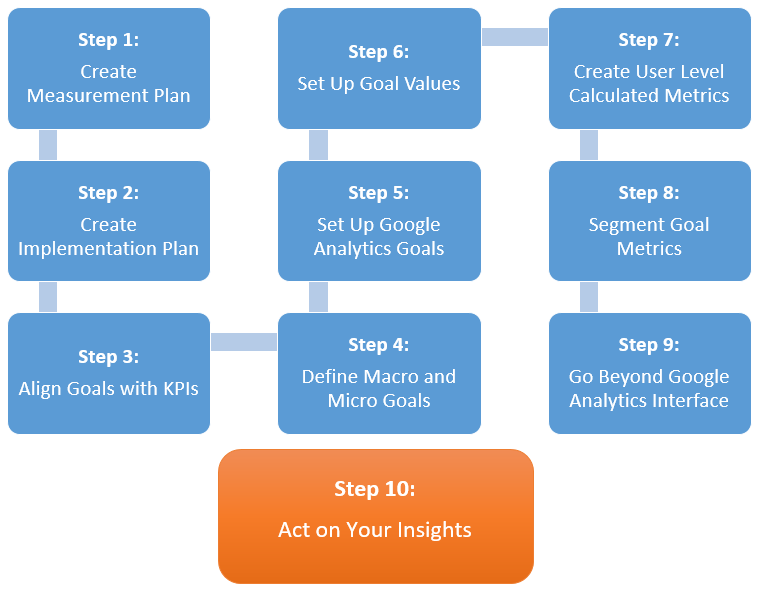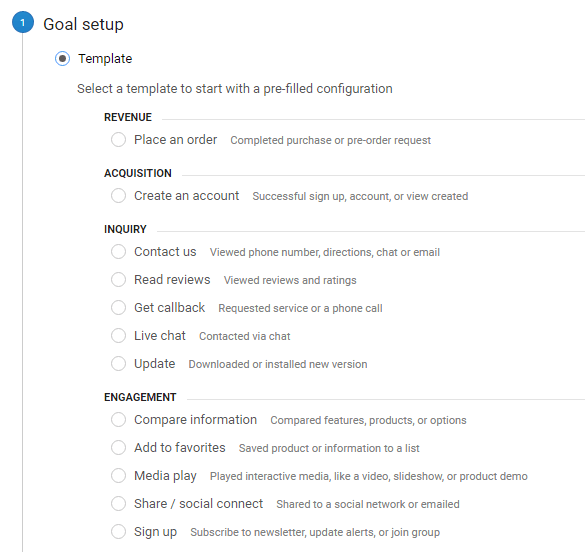What Data Is Google Analytics Goals Unable to Track: A Full Guide
What Data Is Google Analytics Goals Unable to Track: A Full Guide
Blog Article
Discover the Limitations of Google Analytics Goals: Revealing the Information Kind That Remain Untrackable
As services significantly count on data-driven decision-making, recognizing the restrictions of tools like Google Analytics comes to be vital. While Google Analytics Goals deal important understandings into customer interactions, there exist information types that avoid monitoring, posturing obstacles to a thorough understanding of customer behavior. These untrackable information types increase questions regarding the precision and completeness of the analytics data that organizations heavily rely upon for their electronic techniques. Interested to uncover the concealed dead spots in your data evaluation procedure?
Incomplete Individual Trip Tracking
Incomplete user journey monitoring within Google Analytics can prevent the capacity to properly analyze individual habits. When the customer trip is not totally tracked, there are voids in the information that prevent an extensive understanding of exactly how individuals engage with an internet site. This absence of understanding can bring about missed out on chances for optimization and renovations to the customer experience.
One typical issue with insufficient customer journey tracking is the lack of ability to see the complete course that users take previously completing an objective or leaving the site. Without this info, it is challenging to identify where individuals may be encountering barriers or rubbing factors that avoid them from transforming. In addition, insufficient monitoring can cover the impact of certain advertising efforts or internet site changes on user actions.
To resolve this limitation, it is vital to establish proper tracking devices within Google Analytics to capture the whole user trip. This may involve establishing up occasion tracking, goal funnels, or utilizing tools like Google Tag Supervisor to ensure that no vital communications go unrecorded. By obtaining a comprehensive sight of the individual journey, site proprietors can make more educated decisions to boost individual engagement and drive conversions.
Acknowledgment Challenges
Browsing through attribution difficulties in Google Analytics requires an extensive understanding of how different touchpoints add to the total conversion process. Attribution difficulties arise from the complexity of modern-day customer trips, where customers interact with several networks before converting. Google Analytics provides different acknowledgment designs like first touch, last touch, and direct, each offering a different viewpoint on how credit history is appointed to touchpoints along the conversion course. These designs might not always properly reflect the real influence of each touchpoint on the conversion.
One usual acknowledgment obstacle is the problem in associating conversions to the proper source, especially in situations where individuals communicate with multiple networks before transforming. This can result in inaccuracies in establishing which advertising and marketing initiatives are driving one of the most conversions. In addition, cross-device monitoring poses another acknowledgment obstacle, as users often switch in between tools throughout their journey, making it challenging to track their interactions seamlessly. Marketers should thoroughly evaluate and analyze acknowledgment information to make enlightened choices and enhance their advertising techniques efficiently.
Offline Conversions
Offered the challenges linked with associating conversions properly in online channels, the dimension of offline conversions presents a significant chance for marketers seeking a much more comprehensive understanding of their clients' trip. Offline conversions our website refer to activities that clients take in the physical globe, such as making acquisitions in brick-and-mortar stores or over the phone, going to occasions, or engaging with published materials - what data is google analytics goals unable to track. These conversions are critical for companies that run both online and offline, as they provide valuable understandings right into the efficiency of marketing projects across different touchpoints
Tracking offline conversions traditionally positioned a substantial challenge for marketing experts, as it was challenging to link these activities back to details online interactions precisely. With innovations in modern technology, such as the assimilation of CRM systems, special identifiers, and promo code codes, organizations can currently link the space between online and offline data to acquire a much more alternative sight of client behavior. By successfully determining offline conversions, marketing experts can maximize their strategies, allocate sources extra effectively, and ultimately enhance the total consumer experience.
Cross-Device Monitoring
Cross-device monitoring plays a vital role in comprehending the interconnected nature of customers' digital interactions across numerous gadgets. In today's omnichannel globe, where users seamlessly change between desktop computers, tablets, and mobile phones, tracking their behavior throughout these devices is essential for online marketers to gain a thorough view of their client journey.

In addition, privacy concerns and guidelines such as GDPR and CCPA have even more challenging cross-device monitoring. With individuals demanding more control over their data and boosted restrictions on tracking innovations, marketers should discover privacy-compliant and innovative ways to connect customer interactions throughout tools.
Dynamic Web Content Engagement
Comprehending individual engagement with dynamic web content is crucial in maximizing electronic marketing techniques for enhanced audience communication. Dynamic material refers to website components that transform based upon customer behavior, preferences, or various other aspects, using an individualized experience. Tracking individual communications with vibrant web content presents obstacles for traditional analytics tools like Google Analytics.
While Google Analytics can track basic communications like clicks and web page views, it might struggle to catch more nuanced engagements within vibrant content. what data is google analytics goals unable to track. Metrics such as time invested in certain dynamic elements, float activities, or interactions within pop-ups are frequently not conveniently quantifiable making use of basic monitoring techniques. This constraint impedes online marketers' capacity to totally grasp how customers are engaging with vibrant content and customize their strategies as necessary

Conclusion
In final thought, Google Analytics objectives have constraints in tracking incomplete customer journeys, associating conversions precisely, recording offline conversions, tracking cross-device interactions, and determining vibrant web content engagement. These restrictions highlight the importance of exploring extra tracking Clicking Here approaches and devices to get an extra comprehensive understanding of individual actions and conversions past what Google Analytics can give.
While Google Analytics Goals deal image source useful understandings right into customer communications, there exist data types that elude tracking, presenting difficulties to a thorough understanding of customer actions.Insufficient customer trip monitoring within Google Analytics can impede the capacity to accurately evaluate user behavior. When the user journey is not fully tracked, there are gaps in the information that protect against an extensive understanding of how users communicate with an internet site.One common issue with insufficient customer trip monitoring is the failure to see the full course that individuals take previously finishing a goal or leaving the website. By getting a comprehensive sight of the customer trip, site owners can make even more educated decisions to boost customer engagement and drive conversions.
Report this page